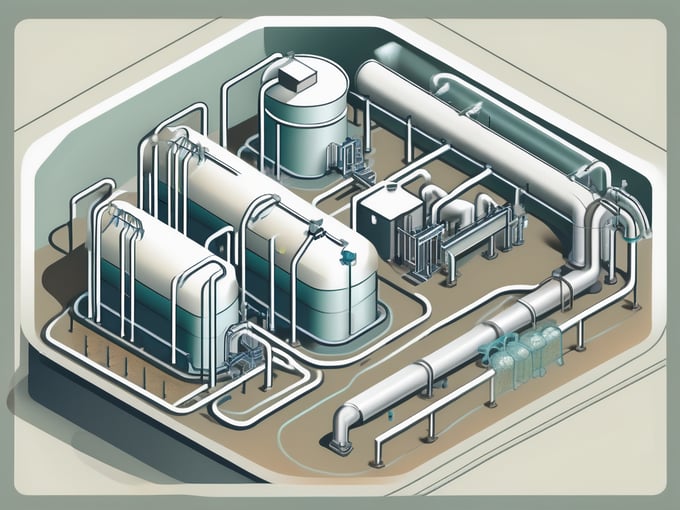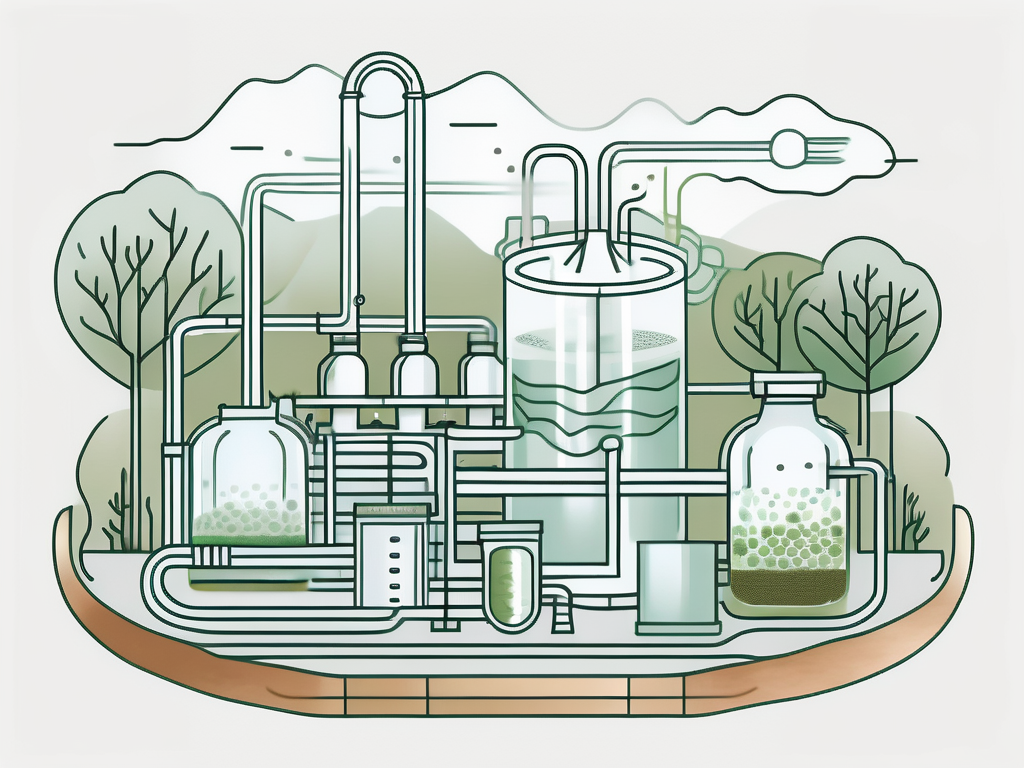
Tertiary Treatment: Wastewater Treatment Explained
Tertiary treatment, also known as advanced treatment, is the final stage in the wastewater treatment process. This stage is designed to further improve the quality of the wastewater before it is released back into the environment. The main goal of tertiary treatment is to make the water safe for discharge into sensitive or fragile ecosystems and for reuse in various industrial, agricultural, and even domestic applications.
While primary and secondary treatment processes remove a significant amount of pollutants from wastewater, they do not completely eliminate all contaminants. Tertiary treatment is necessary to remove these residual pollutants and to ensure that the treated water meets the required standards for discharge or reuse. This article will provide an in-depth look at the various aspects of tertiary treatment, including its purpose, the different methods used, and its significance in the overall wastewater treatment process.
Understanding Tertiary Treatment
The main purpose of tertiary treatment is to provide a final treatment stage to raise the effluent quality to the required standard before it is discharged to the receiving environment (sea, lake, river, etc.). This stage deals with the removal of particles that are too small to be removed during secondary treatment, as well as the removal of residual organic and inorganic substances, nutrients, heavy metals, and pathogens.
It's important to note that the specific processes used in tertiary treatment can vary greatly depending on the composition of the wastewater and the discharge requirements. In some cases, tertiary treatment may involve a simple disinfection process, while in others, it may include complex physical, chemical, and biological processes.
Physical Processes
Physical processes in tertiary treatment involve the use of physical methods to remove contaminants from wastewater. These methods include filtration, sedimentation, and flotation. Filtration is the process of passing wastewater through a medium that traps particulate matter. Sedimentation involves allowing particles to settle to the bottom of a basin from where they can be removed. Flotation is the process of removing particles that float on the surface of the water.
One common physical process used in tertiary treatment is microfiltration, where wastewater is passed through a membrane with tiny pores that trap small particles. Another is activated carbon adsorption, where contaminants adhere to the surface of activated carbon particles.
Chemical Processes
Chemical processes in tertiary treatment involve the use of chemicals to remove contaminants from wastewater. These processes include chemical precipitation, ion exchange, and advanced oxidation. Chemical precipitation involves adding chemicals to the wastewater to make contaminants form solid particles that can be easily removed. Ion exchange involves swapping unwanted ions in the wastewater with more desirable ones. Advanced oxidation involves using oxidants to break down harmful substances.
Chemical processes are often used to remove specific contaminants that cannot be effectively removed by physical or biological processes. For example, phosphorus can be removed by chemical precipitation, while advanced oxidation can be used to break down complex organic compounds.
Significance of Tertiary Treatment
Tertiary treatment plays a crucial role in protecting the environment and public health. By removing residual pollutants and pathogens from wastewater, it prevents the contamination of water bodies and reduces the risk of waterborne diseases. Furthermore, it allows wastewater to be reused, thereby conserving water resources.

Moreover, tertiary treatment can help industries meet regulatory requirements for wastewater discharge. Many industries generate wastewater that contains specific contaminants which must be removed before the wastewater can be discharged. Tertiary treatment provides a means to achieve this.
Environmental Protection
Without tertiary treatment, the discharge of untreated or partially treated wastewater can lead to the pollution of rivers, lakes, and oceans. This can result in the degradation of aquatic ecosystems, loss of biodiversity, and the contamination of drinking water sources. By removing residual pollutants and pathogens, tertiary treatment helps to protect these water bodies and maintain their ecological health.
Furthermore, by allowing for the reuse of treated wastewater, tertiary treatment can help to conserve water resources. This is particularly important in regions where water is scarce. Treated wastewater can be used for a variety of purposes, including irrigation, industrial processes, and even direct potable reuse.
Public Health
Wastewater can contain a variety of pathogens, including bacteria, viruses, and parasites, that can cause diseases in humans. Tertiary treatment processes such as disinfection can effectively kill or inactivate these pathogens, thereby reducing the risk of waterborne diseases.
Moreover, by removing harmful substances such as heavy metals and certain organic compounds, tertiary treatment can prevent these substances from entering the food chain and causing health problems. For example, heavy metals can accumulate in fish and shellfish, posing a risk to humans who consume them.
Common Tertiary Treatment Methods
There are several methods commonly used in tertiary treatment, each with its own advantages and disadvantages. The choice of method depends on the specific requirements of the wastewater treatment plant and the nature of the wastewater being treated.
Some of the most common tertiary treatment methods include filtration, nutrient removal, disinfection, and advanced oxidation processes. Each of these methods will be discussed in detail in the following sections.
Filtration
Filtration is a physical process that involves passing wastewater through a medium that traps particulate matter. The medium can be a bed of sand, a membrane, or other material. Filtration is particularly effective at removing suspended solids and certain types of bacteria.
There are several types of filtration used in tertiary treatment, including rapid sand filtration, slow sand filtration, and membrane filtration. Each type has its own advantages and disadvantages. For example, rapid sand filtration is fast and effective, but it requires regular backwashing to remove trapped particles. On the other hand, slow sand filtration is slower but requires less maintenance.
Nutrient Removal
Nutrient removal is a key aspect of tertiary treatment. Excess nutrients, particularly nitrogen and phosphorus, can cause eutrophication, a process where excessive nutrient levels lead to the rapid growth of algae and other aquatic plants in water bodies. This can deplete oxygen levels in the water and harm aquatic life.
There are several methods for nutrient removal, including biological processes, chemical precipitation, and ion exchange. Biological processes involve using bacteria to convert nitrogen into gas that can be released into the atmosphere. Chemical precipitation involves adding chemicals to the wastewater to make phosphorus form solid particles that can be easily removed. Ion exchange involves swapping unwanted ions in the wastewater with more desirable ones.
Disinfection
Disinfection is a crucial part of tertiary treatment. It involves killing or inactivating pathogens in the wastewater to prevent the spread of diseases. There are several methods for disinfection, including chlorination, ultraviolet (UV) radiation, and ozonation.
Chlorination involves adding chlorine to the wastewater. Chlorine is a powerful disinfectant that can kill a wide range of pathogens. However, it can also react with organic matter in the wastewater to form harmful byproducts. UV radiation involves exposing the wastewater to UV light, which damages the DNA of pathogens and prevents them from reproducing. Ozonation involves adding ozone to the wastewater. Ozone is a powerful oxidant that can kill pathogens and break down harmful substances.
Advanced Oxidation Processes
Advanced oxidation processes (AOPs) are a group of methods that involve the generation of highly reactive species, such as hydroxyl radicals, that can break down a wide range of organic compounds. AOPs are particularly effective at removing recalcitrant organic compounds that are resistant to conventional treatment methods.
There are several types of AOPs, including ozone-based processes, hydrogen peroxide-based processes, and photochemical processes. Each type has its own advantages and disadvantages. For example, ozone-based processes are highly effective but can be expensive to operate. On the other hand, hydrogen peroxide-based processes are less expensive but may not be as effective at removing certain types of compounds.
Conclusion
Tertiary treatment is a crucial part of the wastewater treatment process. It provides a final treatment stage to raise the effluent quality to the required standard before it is discharged to the receiving environment or reused. By removing residual pollutants and pathogens, tertiary treatment helps to protect the environment, conserve water resources, and safeguard public health.

While the specific processes used in tertiary treatment can vary greatly, they all serve the same purpose: to further improve the quality of the wastewater. Whether through physical, chemical, or biological processes, tertiary treatment ensures that the treated water is safe for discharge or reuse. As such, it plays a vital role in the overall wastewater treatment process and in our efforts to protect and preserve our precious water resources.



